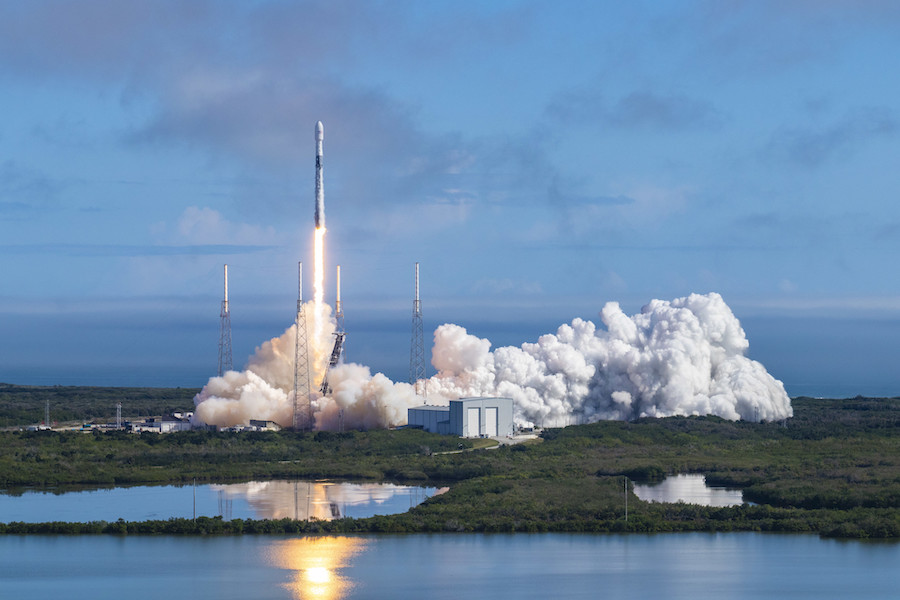This September, SpaceX’s Falcon 9 rockets have a busy schedule, showing how diverse and important spaceflight has become. They’ll be launching national security satellites, adding to satellite internet networks, sending crucial supplies, and carrying scientific equipment. These launches prove that access to space has changed from a rare event to a normal and essential part of today’s world.
This group contains 21 spacecraft that link to each other. It’s a key step in building a strong, worldwide military communications network called the Proliferated Warfighter Space Architecture. This mission will be the sixth flight for the first-stage booster, B1093. After its job is done, it’ll land on the drone ship Of Course I Still Love You, out at sea.
On Sept. 10, as the sun comes up over Vandenberg Space Force Base in California, a Falcon 9 rocket is set to launch the first group of Space Development Agency’s Tranche 1 Transport Layer B satellites into a polar low-Earth orbit.
This mission, which includes 21 spacecraft linked by optical connections, is a planned move to create a strong, worldwide military communications network called the Proliferated Warfighter Space Architecture. The launch is set for 7:12 a.m. PDT. It will be the sixth flight for the first-stage booster, B1093, which will land on the drone ship Of Course I Still Love You offshore. Later that day, another Falcon 9 is scheduled to launch from Cape Canaveral, Florida, at 8 p.m. EDT. It’s carrying Satelit Nusantara Lima to geostationary transfer orbit.It’s designed to support telecom networks in the area. Nusantara Lima is a key replacement for a past failed launch and shows Indonesia’s continued push to improve its digital setup.
SpaceX is switching gears to a science mission on September 23, launching from Kennedy Space Center. A Falcon 9 rocket will send NASA’s IMAP probe, the Carruthers Geocorona Observatory, and NOAA’s SWFO-L1 to the L1 Lagrange point. They will also watch the geocorona, which is important for knowing how the Sun impacts Earth’s space. At first glance, these frequent launches might seem like they’re all about rockets and tech. But each mission truly reflects humanity’s drive for progress, innovation, and collaboration.
The SDA’s goal goes beyond just satellites. It’s about making sure defense communications stay strong, despite challenges. Planners, engineers, and operators work hard with calculations, sensors, and antennas to protect our country’s interests. People all over the world are watching rocket launches. Whether it’s in the classroom or at home, they’re pretty amazing to see. With all the launches happening this month, kids might just start doing science projects, asking about space before bed, and getting into space in a big way. Ten years ago, spaceflight only made news sometimes. But this September shows us that it’s now something we think about every day, with missions, plans, and chances for the future. The Falcon 9 launches for security, business, science, and teamwork show what we can do as a society and also how we’re changing our role in space .When rockets launch and return, they have satellites, but also our expectations, relationships, and a common goal for the future.










